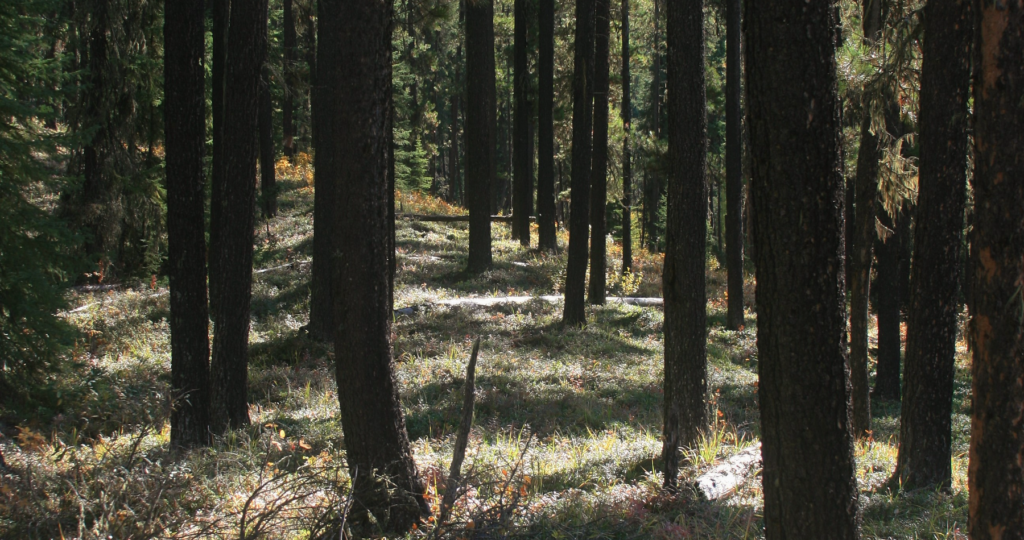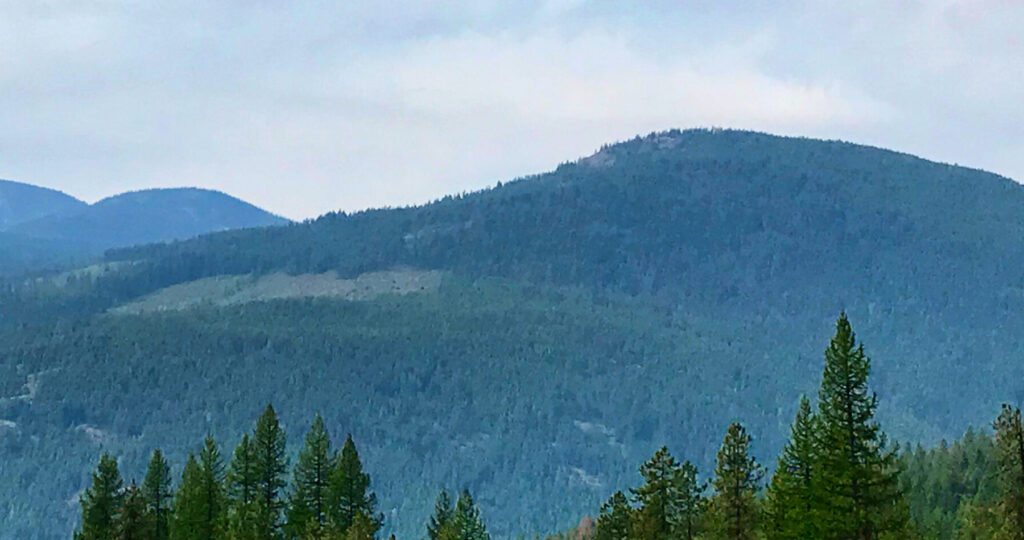Post Category : Field Life Local Archaeology Special Finds
A tangible moment in time…
“What is the coolest thing you have found?”
For archaeologists it is a question that comes up often. Sometimes the answer begins with a polite explanation to clarify that archaeology does not involve digging up dinosaur bones in Drumheller. If that step can be skipped, there are a number of ways I may choose to answer the question. A simple answer that requires little to no extra explanation is often given if I feel lazy or am short of time; everyone knows what an arrow head is, so I describe the handful of knapped projectile points I have found over the years. But if feeling talkative, I mention a small group of artifacts I found at a site in northern Alberta that provide a true glimpse of a single moment in time.

While surveying forest cutblocks northeast of Conklin, Alberta, I was tasked with assessing the north side of one of the many small pot hole lakes that dot the region. High ground next to water usually has great archaeological potential, so I began shovel testing along the south edge of a large flat hill. Finding only sand, I turned my attention to the sloping terrain leading down towards the lake shore.
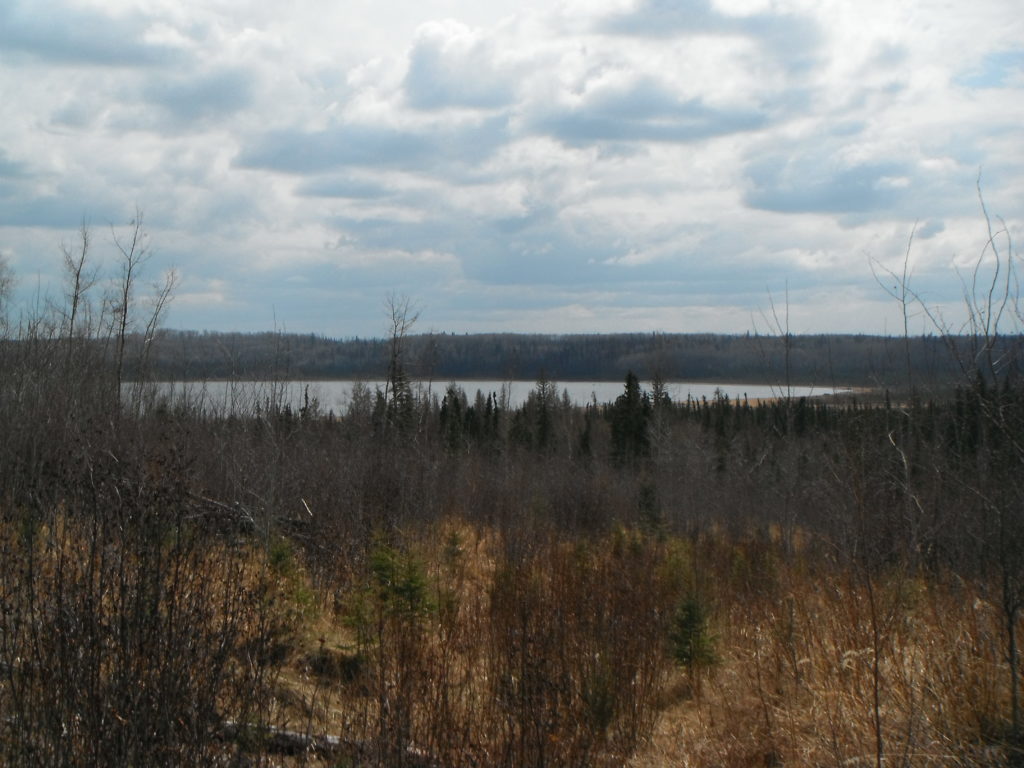
The slope of the terrain did not look promising, but two narrow ridges offered access to the water and a closer view of the lake. Sure enough, we identified a site by shovel testing midway down the slope. The first artifact I found was a beautiful chert flake retouched on one side to make a cutting or scraping tool.
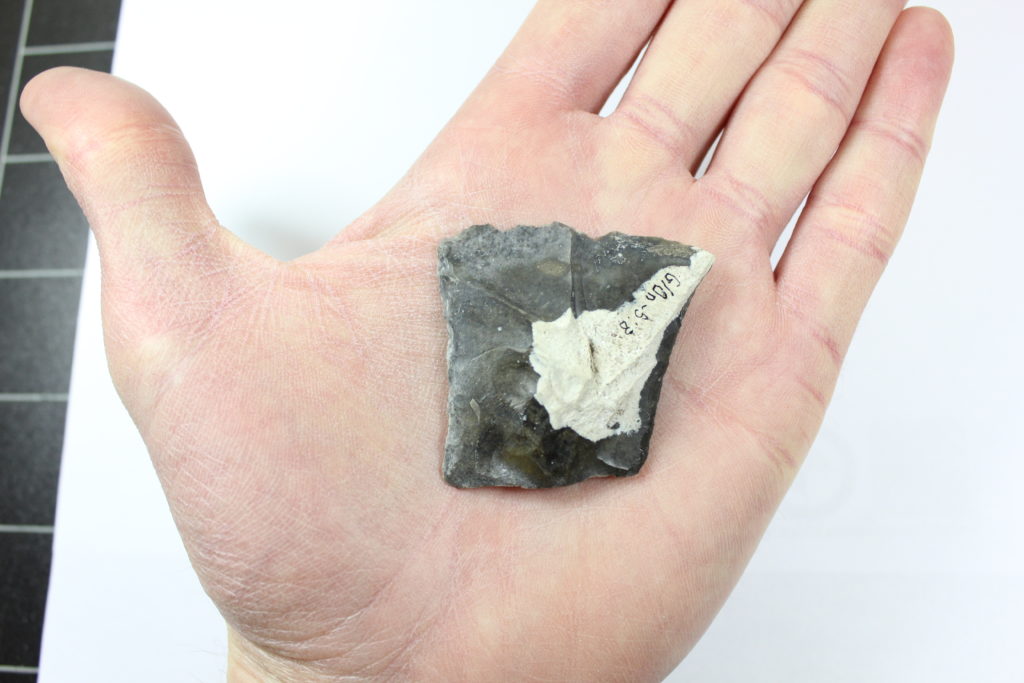
Like the projectile points I sometimes mention, it had the obvious beauty that comes with a tool made from intricately working a piece of stone, and like most tools it was likely a valued item carried from one location to another. No doubt a very “cool” artifact, but one with a somewhat mysterious past because its presence at the site came at the end of its life when it was either discarded or lost. The artifacts that excite me the most are those tied to a single location and time.
Roughly 30 meters away from the retouched flake was a group of artifacts that reflected one of those tangible moments in time. Less than twenty centimetres apart, two fist-sized stones were found, one intact, the other with several flakes removed.
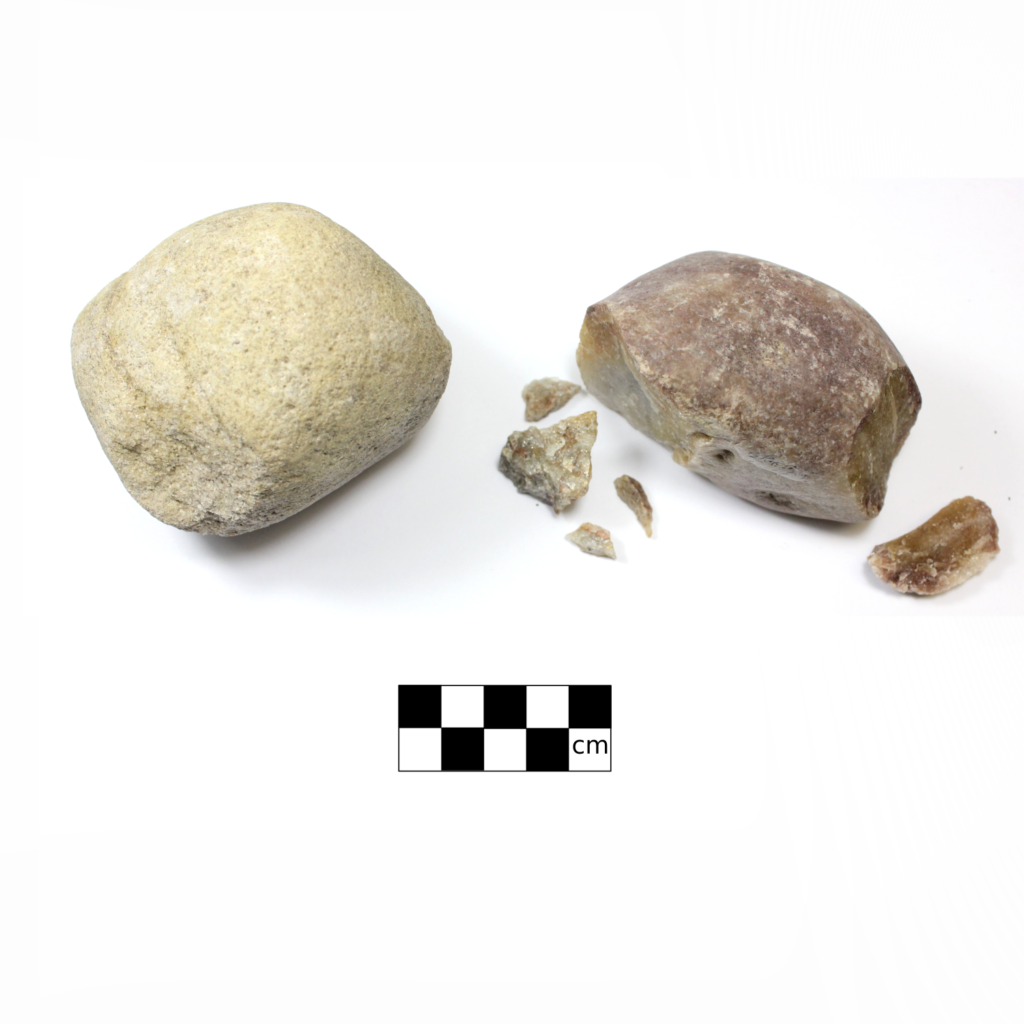
The story the artifacts tell is one we sometimes see at archaeological sites where cobbles are a main source of lithic material. The larger stone, known as a hammerstone, was used to strike the smaller quartzite stone to test it in an effort to see whether it was a good material for making stone tools. After three strikes their work was interrupted or their mind was made up because the hammerstone, the tested quartzite cobble, and the flakes were abandoned. Although its possible the person who struck those rocks broke off that flake they were after, I think it is much more likely that they were disappointed with their results.
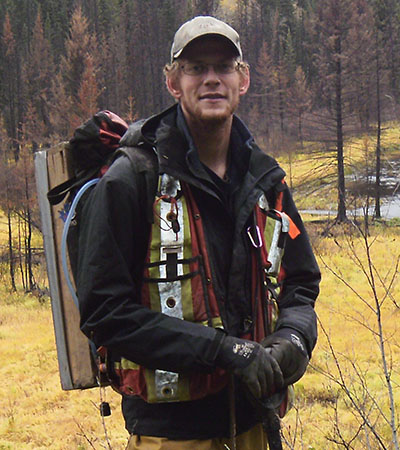
Vince Jankunis
Project Archaeologist
Vincent Jankunis is a Project Archaeologist with Ember Archaeology. He is our lead for Forestry work, and our expert in historic period sites. Vince is also our key contact for work in the Territories. After completing his Bachelor’s degree at the University of Alberta he began his professional career in the Boreal forest of northeast British Columbia. In 2011, Vince joined Ember Archaeology where he has continued to specialize in the Boreal Forest archaeology while expanding into other landscapes within his home province of Alberta.


